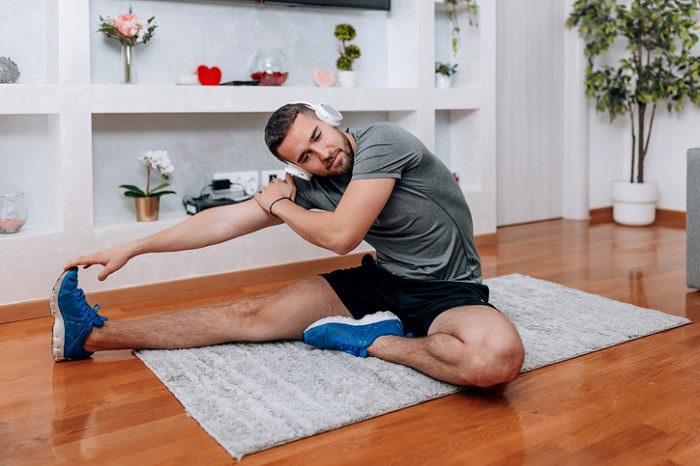June is known as Men’s Health Month in the United States. During this month, experts encourage men to take care of their well-being through active prevention of medical concerns.
This entails resolving lingering chronic issues that do not seem life-threatening, such as vein disorders like varicose veins. This condition develops when a faulty valve causes blood to pool within a vein, creating a bulging, discolored appearance in the skin.
Because this causes aesthetic problems and mild discomfort, many men think they can tolerate varicose veins without seeking treatment. But untreated vein diseases can lead to mobility issues and worsening pain.
Take advantage of Men’s Health Month and schedule a consultation with your vascular specialist to discuss your varicose veins. Learn more about this disorder, its treatment, and how it affects male patients specifically in this month’s blog.

Are Men at Risk for Varicose Veins?
Women tend to have a higher risk of forming varicose veins due to certain hormones that can weaken blood vessels over time. Pregnancy will also put pressure on the veins which can lead to vein problems.
But men can still develop varicose veins, especially if they carry other risk factors like family history, smoking habits, older age, or a lack of physical activity. If these characteristics sound familiar, you should prioritize your vein health. Look out for varicose veins symptoms, like swelling, discoloration, or soreness in your legs or hands.
How Will Doctors Treat Varicose Veins in Men?
A doctor will approach treating varicose veins in men the same way that they would treat a patient of any gender. Depending on your comfort level and the severity of your symptoms, the vein specialist can suggest a number of ways to resolve your vein disorder.
In mild cases, lifestyle changes and compression stockings can relieve varicose vein symptoms. But to completely treat damaged veins, a doctor will use targeted therapies like endovenous laser treatment (EVLT) or ambulatory hook phlebectomy.
EVLT involves inserting a tiny catheter into the affected vein and using a laser to carefully close the blood vessel. This renavigates blood flow away from this area, and the vein will shrink as a result.
An ambulatory hook phlebectomy will remove a damaged vein through a small incision. You will need some downtime to recover from this procedure, but you can see prompt results. With both of these treatments, varicose veins and the accompanying discomfort will be gone for good.
To prevent varicose veins from developing or returning, you should engage in stretches and exercises that keep your legs moving and encourage healthy blood flow. Keep your legs elevated when you can as well to improve circulation.
Frequently Asked Questions
Do men really get varicose veins as frequently as women do?
Men can indeed develop varicose veins, although women might be more prone due to hormonal factors and pregnancy. Risk factors for men include genetic predisposition, smoking, aging, and prolonged inactivity. These factors weaken vein walls or valves, causing blood to pool and veins to bulge. So, men who identify with any of these risks should remain vigilant about changes in their vascular health.
Why do many men delay seeking treatment for varicose veins?
Some men might think varicose veins are just a cosmetic issue or that the discomfort is tolerable. They may also dismiss the condition as a “women’s issue,” not realizing the real risks to their own health. Others feel too busy to schedule medical evaluations or fear procedures that seem invasive. However, modern treatments are often minimally invasive and yield lasting relief with relatively quick recovery times.
Are there any at-home methods to manage varicose veins while I wait for treatment?
Several simple measures can bring temporary relief. Wearing compression stockings helps support proper blood flow by reducing pooling in the veins. Staying active, taking breaks, and elevating your legs when possible can also lessen discomfort and swelling. These strategies won’t eliminate varicose veins, but they may minimize symptoms until you can seek professional treatment.
What’s the best next step if I suspect I have varicose veins?
Scheduling a consultation with a vein specialist is a good place to begin. A thorough exam and possible imaging will confirm if the veins are varicose or if another issue is at play. The doctor will explain treatment options and help you choose what aligns best with your needs. Acting sooner rather than later ensures you address potential complications early and preserve optimal vein health.
Why might men notice varicose veins more with age?
Over time, veins can lose elasticity, and valves can weaken, making them less effective at pushing blood upward. Hormonal shifts and slower cell regeneration can further contribute to vein stress. Older age also increases the likelihood of additional health conditions aggravating circulation, like high blood pressure. Together, these factors can cause vein walls to become damaged and more susceptible to bulging.
Does insurance cover varicose vein treatment for men?
Coverage can depend on whether the varicose veins are deemed medically necessary to treat or only a cosmetic concern. Insurers may cover procedures if they address pain, leg swelling, or other complications that disrupt daily life. Policies vary, so it’s best to check directly with your insurance provider.
These efforts can help improve vein health in patients of any gender. Learn more vascular health tips when you visit a vein doctor near you. In Dayton, OH, you can call a vein treatment center at 937.303.4500.
